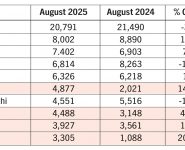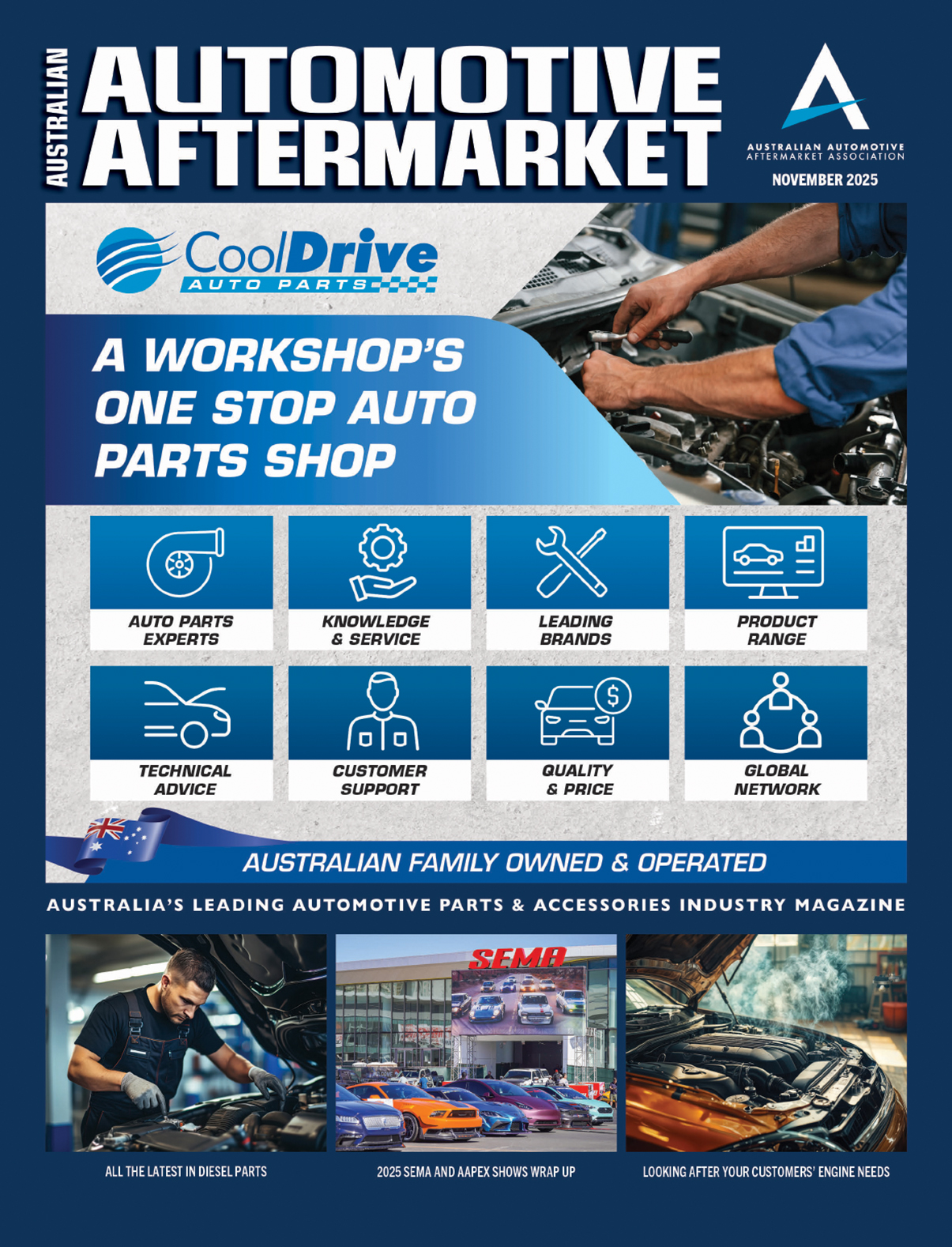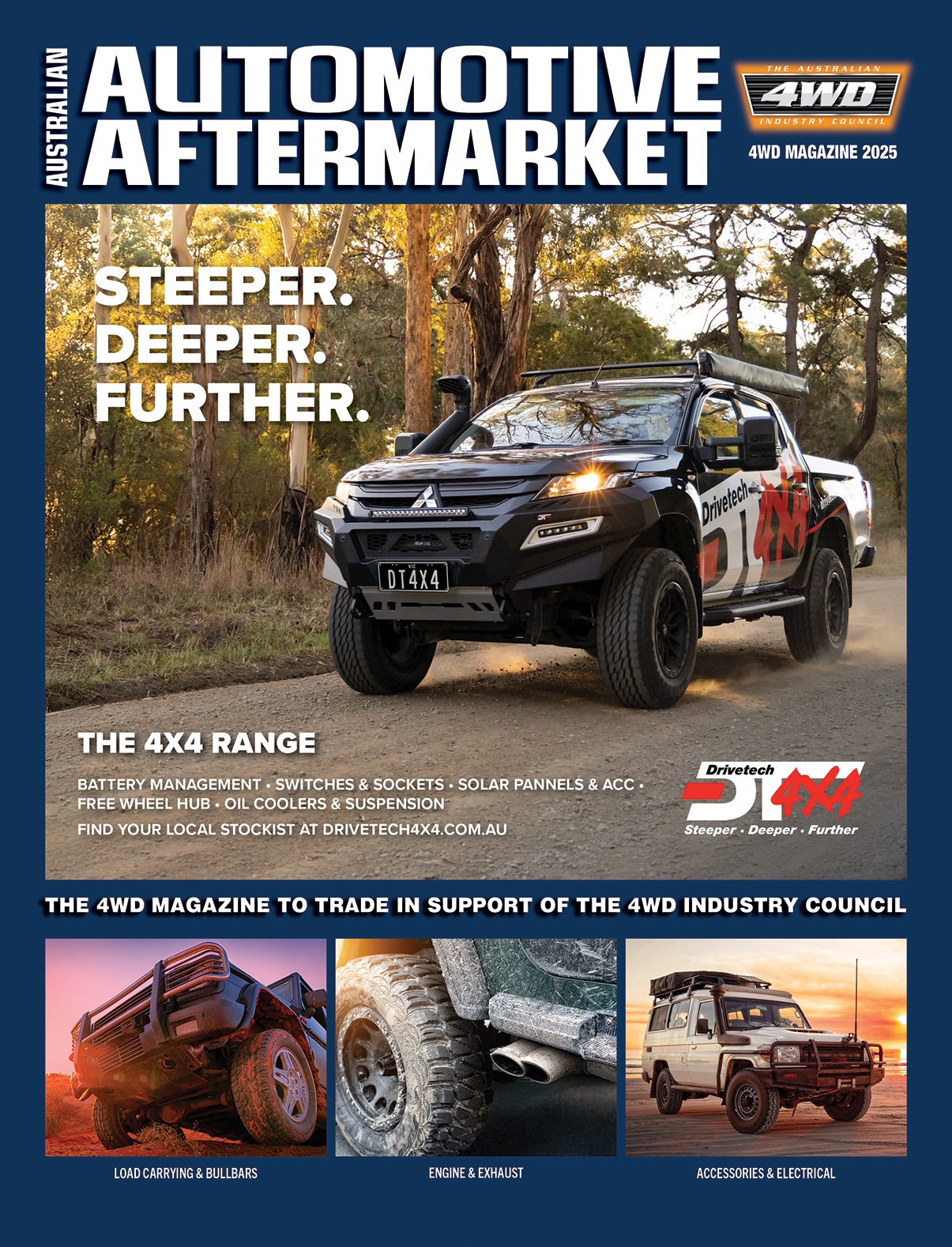WHY AUSTRALIA’S EVOLVING CAR PARC DEMANDS A SMARTER AFTERMARKET STRATEGY
The growing car parc offers a significant opportunity to the Australian aftermarket
Australia’s car parc is projected to grow from 21.8 million vehicles in 2025 to 24.3 million by 2031, but for aftermarket workshops, the real story isn’t just about growth, it is about how this expanding fleet is aging and what that means for servicing demand.
The latest edition of the Fifth Quadrant market forecasts reveals a fundamental shift in car parc composition, which will impact where vehicle owners will seek maintenance and repairs in the years ahead.
An aging fleet creates opportunity
By 2031, the average age of vehicles in the Australian car parc will reach 12.3 years, with more than 12 million vehicles over 10 years old still on our roads.
This aging trend disrupts traditional dealership relationships, with vehicle turnover creating a natural break point, and driving cars to aftermarket providers for cost-effective maintenance.
But, older vehicles also bring complexity that demands more from workshops as they work to manage aging electronics, complex powertrains, and cumulative wear issues.
Meanwhile, workshops can’t ignore the steady flow of newer, more technologically advanced vehicles moving into the six-10 year category.
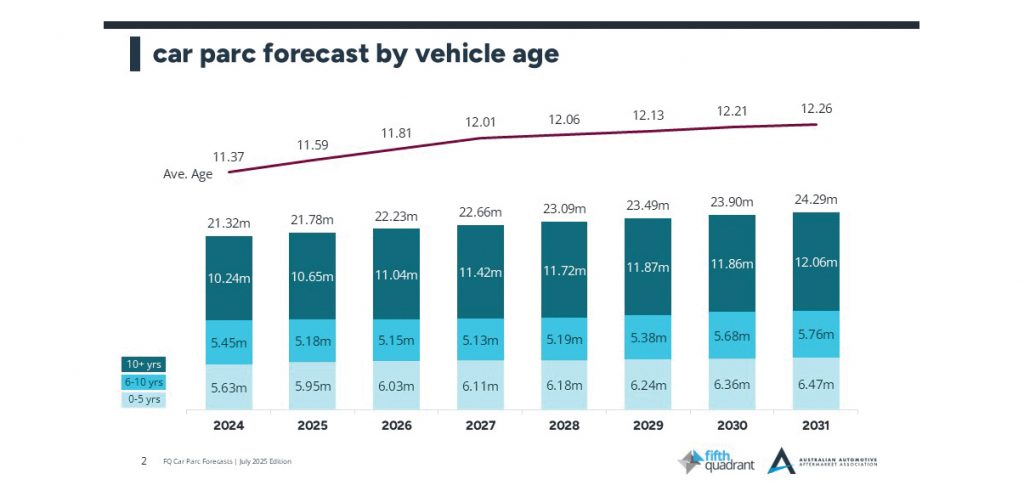
The numbers tell a compelling story
Historic vehicle servicing trends gives us a clear idea of the typical distribution of vehicles by age between dealership and aftermarket workshops.
The Fifth Quadrant Consumer Tracker in 2024 reports that aftermarket providers captured 54 percent of drivers’ last scheduled service visits and 63 percent of tyre servicing visits.
Based on this, we can estimate overall aftermarket service demand, projecting it to grow from 13.6 million vehicles in 2024 to 15.6 million by 2031.
What’s particularly striking is how the 10-plus year segment drives most of this growth, expanding to almost 10M vehicles at the end of the decade.
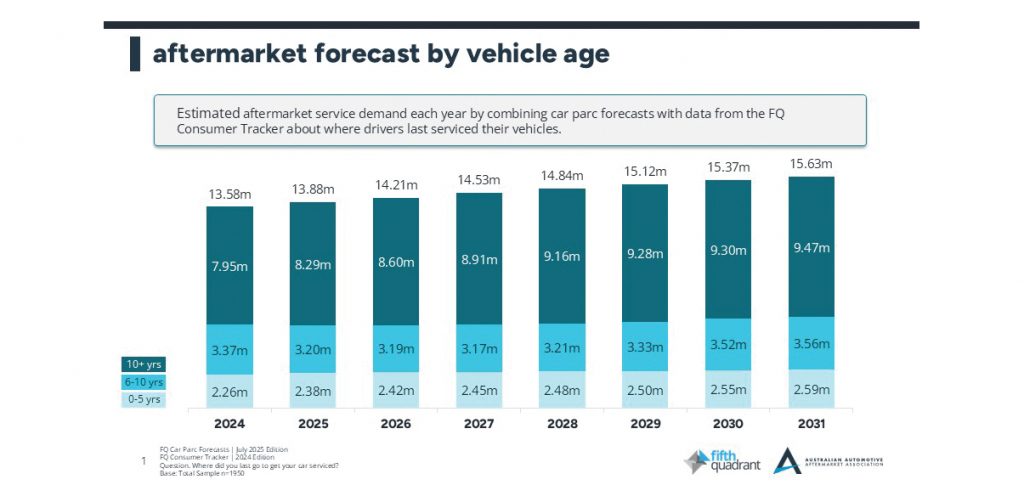
This older segment represents the aftermarket’s sweet spot, where vehicles have aged out of dealer warranties, but are still playing an important role within their household.
The dealership challenge
While these trends favour aftermarket growth, dealerships aren’t retreating quietly.
Capped price servicing, extended warranties, and bundled service plans are retention tools that are being deployed increasingly aggressively as they seek to retain customers beyond traditional thresholds.
These dealership incentives work because they address consumer price sensitivity while offering transparency and perceived value.
For the aftermarket, this means cost advantages alone won’t guarantee customer loyalty.
What this means for workshops
The opportunity is clear: 15.6 million serviceable vehicles by 2031, with growth concentrated in older segments where aftermarket providers excel. But capturing this growth requires planning:
• Technology capabilities: diagnostic tools that handle both the aging electronics in older vehicles, and the sophisticated systems in newer ones.
• Skills development: technicians capable of handling ‘most makes / most models’ to effectively service growing vehicle diversity.
• Value communication: clear articulation of expertise, convenience, and long-term relationship building to compete with transparent dealer pricing and bundled incentives.
The growing car parc offers a significant opportunity to the Australian aftermarket.
Workshops that invest in capabilities, skills, and customer relationships will have the opportunity to define their sweet spot and capture their share of this expanding, aging fleet.
This column was prepared for AAA Magazine by Fifth Quadrant, the AAAA’s partners in the AAAA Aftermarket Dashboard which is delivered to AAAA members each quarter.
For more information about its services, visit www.fifthquadrant.com.au or contact Ben Selwyn on ben@fifthquadrant.com.au



